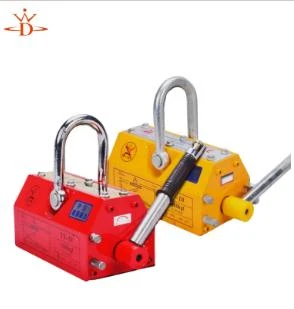1 Ton Capacity Overhead Crane for Efficient Material Handling Solutions
Understanding the 1% Ton Overhead Crane A Comprehensive Overview
Overhead cranes are essential tools in various industrial settings, designed to move heavy loads efficiently across a workspace. Among the various specifications available in the market, the 1% ton overhead crane stands out due to its versatility and suitability for smaller manufacturing and warehousing operations. In this article, we will delve into the features, benefits, and applications of the 1% ton overhead crane, demonstrating its significance in modern industry.
Features of the 1% Ton Overhead Crane
1% ton overhead cranes typically feature a robust structure engineered to handle loads up to 1 ton (approximately 2,000 pounds). This lightweight design doesn't compromise on strength, making it ideal for facilities with limited space. Key components of this crane include
1. Bridge The main beam that spans across the workspace, supporting the hoist and enabling horizontal movement. The bridge can be designed with a single or double girder, depending on the application needs.
2. Hoist The hoisting mechanism, which can either be electric or manual, is responsible for lifting and lowering the loads. Electric hoists are commonly used for their efficiency and ease of operation.
3. Trolley The trolley travels along the bridge and carries the hoist. It ensures smooth and controlled movement of the load in the desired direction.
4. End trucks These are located at either end of the bridge, allowing the entire crane to move along the supporting runway tracks.
5. Control systems Modern 1% ton overhead cranes come with advanced control options, including remote control, pendant controls, and even automated systems for enhanced safety and efficiency.
Benefits of Using a 1% Ton Overhead Crane
The adoption of a 1% ton overhead crane brings numerous advantages to industrial operations
1. Space Efficiency One of the primary benefits of well-designed overhead cranes is their ability to free up floor space. Unlike forklifts, which require aisles for maneuvering, overhead cranes utilize vertical space, thereby maximizing the available work area for other activities.
1 ton overhead crane

2. Enhanced Safety These cranes are equipped with safety features such as overload protection, automatic brakes, and limit switches to prevent accidents. The ability for operators to control the crane from a distance significantly reduces the risk of injuries associated with manual load handling.
3. Improved Productivity Overhead cranes facilitate quick and efficient movement of materials, which can enhance productivity in a facility. They allow for reliable and rapid transportation of goods, enabling workers to focus on other critical tasks.
4. Versatility The 1% ton capacity makes these cranes suitable for diverse applications, ranging from assembly lines to warehouses, and manufacturing facilities. They can lift various loads, including heavy machinery, raw materials, and finished products.
5. Low Maintenance With proper installation and routine inspections, overhead cranes require relatively low maintenance compared to other materials handling equipment. Their durable components are designed to withstand heavy usage, contributing to a longer lifespan.
Applications of the 1% Ton Overhead Crane
The versatility of a 1% ton overhead crane makes it suitable for various industries
1. Manufacturing Factories use these cranes for assembly processes, allowing efficient movement of components and finished products along production lines.
2. Warehousing and Distribution In warehouses, overhead cranes can quickly transfer pallets and packages to and from storage locations, streamlining the logistics process.
3. Construction These cranes can lift heavy building materials, such as steel beams or concrete blocks, thus facilitating efficient site operations.
4. Maintenance and Repair Overhead cranes are invaluable in workshops for handling heavy equipment during maintenance and repair activities, ensuring that mechanics can perform their tasks safely and effectively.
Conclusion
The 1% ton overhead crane represents an optimal solution for industries requiring efficient materials handling without compromising on safety or space utilization. Its robust design and multifunctional capabilities make it an essential asset in warehouses, manufacturing plants, and construction sites. As industries continue to evolve, the demand for reliable overhead cranes like the 1% ton variant will likely grow, driven by the need for efficiency, safety, and productivity in today’s competitive market. Investing in such cranes can significantly enhance operational efficiency, paving the way for sustained growth and success in various industrial sectors.
-
Portable 2000 lb Gantry Crane | Heavy-Duty & AdjustableNewsAug.30,2025
-
Versatile Lifting Solutions with Gantry and Overhead CranesNewsAug.29,2025
-
The Versatile Mobile Gantry Crane SolutionNewsAug.29,2025
-
Reliable Movement with Heavy Machinery Skates and RollersNewsAug.29,2025
-
Reliable Lifting Performance with 2000 lb Gantry Crane and 2 Ton Overhead SystemsNewsAug.29,2025
-
Maximize Lifting Efficiency with PML Magnetic LiftersNewsAug.29,2025
-
Efficient Relocation Starts with Reliable Machinery MoversNewsAug.29,2025
